It is tempting to think of the pop life of William ‘Holly’ Johnson as divisible by a series of pointed before and after’s… before and after Relax… B&A Pleasuredome… B&A Frankie… B&A Blast… B&A illness… B&A a court case… B&A biography. The timeline has added up to maximise the whole; a series of theatrical operations that collude to build the bigger picture at the heart of the artist. Or ‘The Bigger Bang’, as might once been posited.
Yet through it all there have remained unique consistencies. In an unlikely twist on the lascivious pop narrative, Holly’s relationship with his manager and partner Wolfgang Kuhle has continued un-swerved for almost thirty years. His flair for working class escape through lyricism and humour still scintillates. He is unchanged in the respect of being noticeably, unequivocally and even surprisingly Scouse. His sense of personal provocation is undimmed. His impeccable, shopaholic taste for presentation is gilded by the master couturiers Vivienne Westwood and Comme des Garcons’ Rei Kawakubo, even Leigh Bowery : same as it ever was.
Choosing his stage-wear for summer 2011’s headlining turn at a Henley on Thames Festival, he leafed through the racks at Dover Street Market and found a Comme blazer in black leather, with panels cut out, representing a vibrant sartorial ribcage. After three decades on stage, Holly Johnson is still taking wilful perversity and abject high taste to the mainstream. He is still his own, special creation. His special gift to the pop climate was always to lend it a bit of artful thunder and lightning.
His riveting pop tale – harnessed most effectively in the autobiography A Bone in My Flute, a required reading textbook for any PHD study in the golden age of mass market pop music – may have included incommensurate lows to counterbalance the giddy highs. But the intent has remained stoically the same.
Holly Johnson is evangelical about the Warholian idyll of the superstar. He named himself in honour of it, after first witnessing the louche Factory transvestite Holly Woodlawn as a fourteen year old schoolboy in a spit and sawdust Liverpool picturehouse, accompanied by his thrilled best friend (the best friend remains another consistency, fyi). Warhol’s tract was for a stardom that wasn’t measured in facts and figures but rather by cause and effect. By the calculation of whatever those intangible fabulosities that conspire to create proper fame are. Holly Johnson emerged as and remains of a breed of star that wanted to change the world with pop. In his own way – and herein lies the ultimate masterstroke of his career – he managed it.
First with Frankie Goes to Hollywood, then with his own executive solo pop career, Holly Johnson helped shift a seismic reversal in received thinking on parochial gender politics, gay rights and working class Bohemia. Smashing into the draconian national mindset of the early 80s, he did it with wit, style, musicality, poise and danger. There was no apology to his pop persona, just the distinct aroma of playful, artistic raunch. When teenage boys of a certain persuasion saw him on The Tube in 1983, cavorting in steely clone-wear to the sound of hard sex, letting out a fertile smile from the side of his mouth between the climactic second chorus and the bridge, it was as if the UK was ready for a summer of sexual upheaval. His was pop music as agent of social change.
It is no accident that Holly Johnson was the last great superstar to emerge before the ethical meltdown of Live Aid changed pop forever, giving it a new shop-front of social responsibility and queasy role-modelling. Holly’s opening salvos were so much more interesting, referencing Samuel Taylor Coleridge, Tom of Finland, the nightclub utopias found in the metropolis under a glitterball. They were testaments riffing on the amyl throb of high nrg, the trash aesthetic of Divine, the high art of Berlin-era Bowie and the gentlemanly savant of Ferry’s Roxy Music. He had grown up surrounded by a surfeit of pop ideology, blurring gender lines and social norms. His heroes drew on a complex worship of otherness. Guided by the deft hand of his pop cultural predecessors his only responsibility was to his art. He marshalled the idea of gay culture from buttoned-up repression into the new terrain of divine decadence. Watching from the sidelines, this turnaround looked insurrectionary. It was as punk as gay ever got.
It is astonishing to think that through all his endeavours in the pop stratosphere, Holly Johnson has never been undone by the mythology of pop music. He is still a believer in and exponent of its alchemical qualities of transubstantiation, of pop’s innate ability to turn the ordinary into the extraordinary. Why? Because he did it.
***
It is late 2011 and the boutique, revisionist record label Cherry Red has re-released fully expanded versions of Holly Johnson’s entire solo back catalogue, to complement similar packages on Universal and Union Square licensed from his first label of Frankie Goes to Hollywood’s work. The artist has responded to numerous professional European requests to talk about his astonishing career, to assist with the publicity of these expanded volumes of his life’s work. . He travails through the streets of Paris , Vienna and Cologne to satisfy an interesting, post-Youtube demand. To let everyone know that for Holly Johnson there is as much of a present as there is a past.
It is a chance not just for Holly to re-contextualise the cataclysmic stardust he dropped onto pop but for the world to, too. We know that Holly Johnson as a songwriter cannot help but nail a perfectly robust chorus. It was always something that separated and in its own way elevated him from the countercultures that most delighted and excited him. The mainstream success of Holly has always seemed to come as a delightful afterthought, bolted onto his career through the simple signifier of pop craftsmanship. It is under the covers of the surface that the diamonds emerge.
What is truly exceptional about these repackaged works is their unwaveringly other aspect. We know he dropped the taboo of gay sex into the consumer culture as it was peaking under Thatcher and glossed it with a propulsive, glamorous sheen. But stranger consistencies emerged. After naming the first universe he created a ‘Pleasuredome’, in honour of Coleridge, his second was the ribald crash back down to earth of ‘Liverpool’. If the pop model is expected to move from the suburbs to fantasia, he had affected a blinding reverse strategy.
The highlights of the record, the angry, lean rock stomp of Rage Hard with Holly’s defining baritone, the late entry of a Chic-like bass 3 minutes into the synthetic wash of Maximum Joy, the urban commentary of Watching The Wildlife are more circumspect than the bold, technicolour flashes of Pleasuredome. They set-up odd portents for the break-up of one of the 80s defining acts. By the time we have reached Holly’s colourful, bright, bountiful and upbeat solo debut Blast, it is as if he had once been constrained by the tenets of the Frankie musician’s prog-loving straight boys. Like Liza Minelli had been released from fronting Pink Floyd. He declined the inevitable dollar of the revival, the comeback and the Here and Now circuit, over and over again. For Holly, pop was about futurism in the true sense of the word, not basking in the glow of the past.
Blast was a new era, a new release, a new narrative for the star. The voracious Love Train was a call-to-arms for positivity. In its iconic remixed form by Frankie Knuckles it set a new dance-floor precedent for Holly, reflecting the more nuanced house timbres of the day. The smash pop hit Americanos felt like a Bruce Weber shoot set to music. Even at his most fragrantly pop savvy, Holly could not lose the art and the artifice of a fresh vocabulary for pop, always with an underlying political sting. The later solo albums, Dreams That Money Can’t Buy and Soulstream were no less edifying. The marketing budget of a record label committed to success-or-bust may not have been there, but in some ways, after touching the trenchant duality of global pop supremacy, well, who would really want to go back there? Fame was always a glorious accident bequeathed on Holly because it was bound to touch him sooner or later.
We find Holly Johnson in 2012 as relaxed, candid and playful as he has ever been. Invigorated by revisiting his old life as one of his generation’s defining cultural voices on stage again, his love of future pop is still insatiable. He has become a trusted ear of new friends on the pop landscape, people he admires, pushing forward pop into new possibilities. You might’ve seen him hovering at the recent shows of quieter totems, John Grant, Antony and The Johnsons or The Irrepressibles, artists who all acknowledge their debt to a man who opened a floodgate for them later to step through and lend their own uniquely modern twists to.
From his quiet lodgings in South West London, another consistency of his life, Holly Johnson is still a champion of the other. The boy simply cannot help it. So, yes, you may wish to look at the pop life of Holly Johnson as a continuum of before and afters. But for him, one suspects, there are only befores. His deeply idiosyncratic march continues, in awesome shoes.
Paul Flynn January 2012
Holly Johnson. Timeline
1960:
Born near Penny Lane in Wavertree, Liverpool, 9th February in a room soon to be adorned with Beatles wallpaper, in the 60’s capital of pop culture.

1965:
St Mary’s C of E Primary school, played with girls, wrote poetry, starred in school plays, wrote his first song on a glockenspiel.
1972:
Liverpool Collegiate Grammar School for boys. Played in the Rugby team.
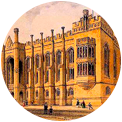
1973:
Discovered Marc Bolan and David Bowie! Dyed his hair, acquired nickname JOYFUL JOHNSON. Began writing songs on an acoustic guitar purchased with cigarette coupons. He traded his collection of Bowie ephemera for those coupons! Started to attend school less and less because of the persecution he and his friend Honey Heath had to suffer due to their outrageous appearance and blossoming individuality.
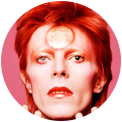
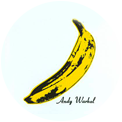
1974:
Discovered Andy Warhol, The Velvet Underground, Derek Jarman, William Burroughs and Jean Genet. Never looked back!
1976:
Officially left school. Becomes member of Liverpool’s Demi Monde. Supported Punk Band as a soloist with acoustic guitar a rendition of Jaque Brel’s “My Death”.
1977:
First performances as a soloist and as a member of seminal New Wave combo Big In Japan. Part of the Eric’s club scene that spawned Echo and The Bunnymen, Teardrop Explodes etc. Performed also with Jayne Casey as a Performance Art/Music duo The Sausages From Mars. Lived in Gambier Terrace, once home of John Lennon .
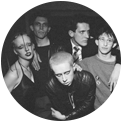
1978:
Started to make Silk Screen Prints and Art T-Shirts as part of his unique Pop Art Statement. Inspired by Warhol’s Exploding Plastic Inevitable, becomes a MULTI MEDIA ARTIST. Big In Japan fold soon after Holly is ousted due to band politics. Their mistake.
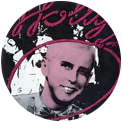
1979:
recorded first solo single YANKEE ROSE c.w.Treasure Island and Desperate Dan for the Erics label. This appeared shortly after the Big In Japan EP FROM A TO B AND BACK AGAIN the first record on the ZOO label. Contains lyric and bass contributions from Holly SUICIDE A GO GO and NOTHING SPECIAL : Recorded HOBO JOE single for the Erics label. Formed the original Frankie Goes To Hollywood – rehearsed for 3 months but left to work on W.I.N. a studio based project (with Steve Lovell) which lasted two years.
1980:
Worked on a building site in London for three months converting Warehouses at Metropolitan Wharf into artists studios- visited Paris in search of Genets Tuilleries – returned to Liverpool wearing a sailors hat.
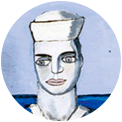
1981:
Took LSD. Ignored the Toxteth riots despite living in Toxteth. Appeared in The Case Of Charles Dexter Ward as a Wraith At The Everyman Theatre. A Gothic Opera based on the H.P. Lovecraft book.
1982:
Formed the second version of F.G.T.H. Started work on Art portfolio inspired by Warhol and Gilbert and George. 1983: About to start Art college when F.G.T.H. signed to ZTT and recorded RELAX.
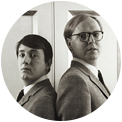
1984:
RELAX reached number one in U.K. , Germany and other territories, SOLD MILLIONS. Banned by the BBC! TWO TRIBES (9 weeks at number 1) and THE POWER OF LOVE both topped UK charts making British Pop History. While TWO TRIBES was at number 1 RELAX re-entered the charts and took the number two spot which had not happened since John Lennon’s death in 1980. Welcome To The Pleasuredome F.G.T.H. s number 1 debut album sells 3 million copies. First U.S. tour. Meets future manager and partner the art collector Mr Wolfgang Kuhle.
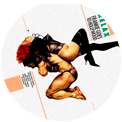
1985:
World tour including Japan. Met Andy Warhol at last. Appeared in the Brian De Palma motion picture BODY DOUBLE. Started working on follow up album. Holly appears on the LIVE AID record.
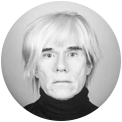
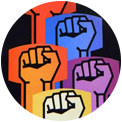
1986/7:
Starts drawing and painting again – while working on LIVERPOOL– F.G.T.H.s second album. RAGE HARD the first single went to number one in Germany number 4 in the UK During the recording Holly becomes unhappy with the musical direction of F.G.T.H. Holly leaves the group in March 87 after European tour and takes legal advice over the ZTT recording and publishing contract which he and Wolfgang believe to be unfair. ZTT put an injunction on Holly’s recording career. Holly starts to paint in oils.
1988:
Holly goes to court– In a legal history making court decision Holly is set free from the Unfair ZTT/Perfect Songs Recording and Publishing contracts. Signed to MCA.
1989:
BLAST– Holly’s first solo album reaches number one in the UK Spawning three hit singles-LOVE TRAIN– AMERICANOS– and ATOMIC CITY. Platinum album. Holly sings on the Number one PWL single FERRY ACROSS THE MERSEY along with Paul McCartney, Gerry Marsden, and The Christians. Proceeds of this single went to the families of the victims of the Hillsborough disaster.


1990:
Holly records LOVE ME TENDER for an NME charity album of Elvis favourites.. Writes a song with VANGELIS. HOLLELUJAH the remix album is released including classic Frankie Knuckles remix of LOVE TRAIN. BLAST the videos is released. Starts to write and record new album but relations with MCA become strained.
1991:
Holly breaks with MCA -he discovers that no promotion budget has been set for his new album. DREAMS THAT MONEY CAN T BUY– Holly’s second solo studio album is released half heartedly by MCA. In November Holly discovers he is HIV POSITIVE. Stops making music and begins writing his autobiography, painting and coming to terms with his diagnosis.


1992:
Writing and painting. Holly withdraws from the world. Starts making 20th Century Icons a series of collages using gold leaf and Objet Trouve inspired by his friend Derek Jarman. Continues writing his book. Tells family off his HIV infection.
1993:
Supported by Wolfgang, Holly announces his HIV Status in The Times, Easter issue but is crucified by the tabloid press who steal the article before it is printed. Finishes first draft of his memoirs which he continues to edit for the rest of the year. RELAX is remixed and becomes a hit again as does THE POWER OF LOVE, TWO TRIBES and WELCOME TO THE PLEASUREDOME. BANG! the greatest hits of F.G.T.H. sells a million copies throughout Europe.

1994:
Holly’s autobiography A BONE IN MY FLUTE published by Century , Random House-receives rave reviews and is a bestseller. The cover is a portrait of Holly by the French Artists Pierre et Gilles. Jimmy Sommerville presents Holly with a legendary handbag at the book launch Holly
collaborates on musical projects with Vinnie Reilley from The Durrutti Column. Writes and performs a song with Ryuichi Sakamoto for Sakamotos forthcoming album, – the title is LOVE AND HATE. Holly appears in the video for this song, which is used live on stage as part of Sakamoto’s world tour.
Begins writing songs again with Nick Bagnall bass player with Fatima Mansions and P.J. Hardy. Produces the single LEGENDARY CHILDREN (ALL OF THEM QUEER) As a gift to the world, especially the gay community who have supported his career over the last ten years. The song is Number One in Israel. Holly Performs it in front of 150.000 people at the annual Gay Pride festival-the 25th anniversary of the stonewall riots. Holly exhibits paintings and Icons at THE ART SHOW at Alexander Palace in London ( including a Seven foot high nude portrait of Burt Lancaster)- this is the biggest art exhibition ever staged in the UK He also exhibits with the CONSUMERIST THEATRE OF DESIRE a group of avant garde artists and performers at VOLTAIRE STUDIOS in London.

1995:
Holly hosts LIVE AT THE LIGHTHOUSE a televised concert to raise money for the LONDON LIGHTHOUSE, he performs THE POWER OF LOVE accompanied by Ann Dudley (ART OF NOISE) on piano. A BONE IN MY FLUTE comes out in paperback. Builds home studios- and starts to write and record. Illustrates for Details magazine, journalism for Modern Painters magazine.

1996:
Exhibits at the 1996 Contemporary Art Fair with Jibby Bean. First One Man Exhibition The House Of Holly curated by Kate Chertavian and Wolfgang Kuhle at The Gallery, Cork Street, London. Plans to record again and create new website and multi media CD ROM Archive. 1997: Exhibits The Beatles Icon at The Royal College Of Art as part of The Milestones Exhibition organized by Brian Eno -in Aid Of War Child. Sculptures by Music Legends were subsequently auctioned off at The Saatchi Gallery. Appears at The Hillsborough Justice Concert with headliners The Lightening Seeds (Anfield Football stadium Liverpool) Holly’s appearance was described as The Highlight of the event (Daily Mirror, NME) The live recording of Ferry Across The Mersey appears on the album of the Event You’ ll Never Walk Alone (V2 Records) Also Appeared at Gay Pride
1997:
Holly appears at GAY PRIDE LONDON the largest open air Music Festival in Europe. Continues to write and record.
1998:
Returns to performing, P.A. at The Astoria London (G.A.Y.) And Gay happening at Konigsberg Club in Krefeld Germany. Holly appears at SUMMER RITES (Club festival) in Brockwell Park London
1999:
Disco Heaven the first commercial release on the PLEASUREDOME label (an ode to disco past and present ). The video, directed by Holly, features cameos from Boy George playing the ghost of Leigh Bowery and Jasper Conran playing the Late American Designer Halston.
SOULSTREAM, released in October 1999. December sees the release (fifteen years after the original went to number one) of Holly’s version of The Power Of Love, with another self directed video – a collage of various live performances of the song. Holly chooses his 25 favourite Rock and Pop Icons of the 20th Century for a book published by absolute press, in aid of The Terence Higgins Trust – the U.K.’s largest HIV/AIDS charity.
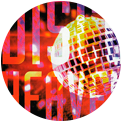
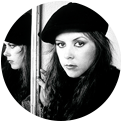
2000:
Holly appears as guest presenter on Virgin Radios TFI Nightly for two weeks. From April 11th Holly exhibits two works at The Liverpool Tate Gallery exhibition entitled “Peter Blake’s ABOUT COLLAGE”, which runs until March 2001. He presents a TV report for Hotlinks on BBC Choice on the opening of Tate Modern. 2000 sees the re-charting of FGTH’s The Power Of Love(Top 10) and Two Tribes (Top 20) remixes in the UK “Maximum Joy” a double album of FGTH originals and new remixes is released alongside a DVD called “Hard On” a Frankie video retrospective.
Holly is saddened by the accidental death of Kirsty MacColl in December; a good friend and musical collaborator (She provided vocals for Boyfriend 65 on the Dreams That Money Can’t Buy album, 1991.
2001:
Holly performs Kirsty MacColls song “Don’t Come The Cowboy With Me Sonny Jim” at her memorial service at St Martins In The Fields Church Leicester Square London.
Invited by Pop Artist Sir Peter Blake R.A. to exhibit at the Royal Academy Of Art Summer Exhibition the painting “Cosmos Mariner (Destination Unknown)” – which is published by the Royal Academy as a Postcard .
At the invitation of Eileen Cooper R.A. Holly starts making prints at the Royal College Of Art (Post Experience Programme in Fine Art Printmaking.)

2002
Exhibitions:
“We Did It” Domo Bal Gallery, London.(Group Show)
“Chelsea Art Fair” With Art First Gallery Cork Street(Group Show)
“Ausgang” Voltaire Studios, London (Group Show)
“Royal Academy Of Art Summer Show” London
“The House Of Hanover” Hanover Gallery, Liverpool
(One Man Show) As part of The Liverpool Biennial
“ARTAID” at Bloomberg Space, London (Group Show)
Art Journalism: Reviews for:
The New Statesman:
GIlbert and George show at The White Cube
Andy Warhol Show at Tate Modern
Modern Painters Magazine:
Becks Futures at The ICA
2003:
Royal Academy Of Art Summer Show exhibits two lithographs “UK AFTER THE RAIN” and “DIANA UNICORN”.
A photograph of Holly performing at The Hillsborough Justice concert at Anfield football ground is included in a new Sir Peter Blake Collage; a remix of the Sgt Pepper Album cover, comissioned by Tate Liverpool as part of Liverpool’s succesful Capital of Culture 2008 bid.
Portrait comission of Maer Roshan for CARLOS a new magazine sponsored by Paul Smith. Modern Painters (July issue) and the Daily Telegraph publish POP V. ART by Holly Johnson an essay on Musicians who were trained at Art Schools .
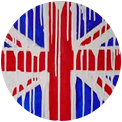
2004:
Sings Live (for AUDIENCE AND tv) in Bremen , Germany . 50 Years Rock Lovesongs which is also released for Christmas (The Soulstream version of The Power Of Love)
Holly continues to paint and make prints for the next few years ….
2009:
Approached by Universal UMTV Division to help them promote Frankie Says Greatest
Holly agrees to their request and appears in the video for Relax (Remix) as a Superstar DJ. Does various promotional appearances including receiving a Q Award for ” Relax ” . Travels to Germany for various TV appearances, performs his own version of The Power Of Love and Americanos for the Ultimate Chart Show
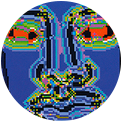
2010:
Universal reissue Blast Holelujah and Dreams That Money Can’t Buy
which are also released later on Cherry Red as expanded Delux Editions alongside the PLEASUREDOME labels Soulstream album
2011:
Holly Returns to Live performing headlining Rewind Festival Henley On Thames.
Three songs from the set appear on Sky Arts TV show. Holly Enjoys the experience and appears at other festivals each Summer.

2012:
Festivals include Stadwerk Festival Potsdam (Berlin)
Starts recording songs he has written over the years with Mark Ralph in Club Ralph using vintage synthesisers including Holly’s EMS Synthi AKS that belonged to Legendary Avant Garde Australian / English Composer Tristram Cary. Mixed on a desk built by Music Legend Conny Plank that was bought from his estate and restored by Mark Ralph and Dave M Allen.
2013:
As One In The Park Festival
2014:
Announces Dancing With No Fear solo Tour and new album preceded by Follow Your Heart 12″ vinyl Remix by Frankie Knuckle and Eric Kupper : one of the legendary House Producers last mix collaborations.
Holly Johnson Cosmos Mariner, destination unknown. The Odyssey Continues…



